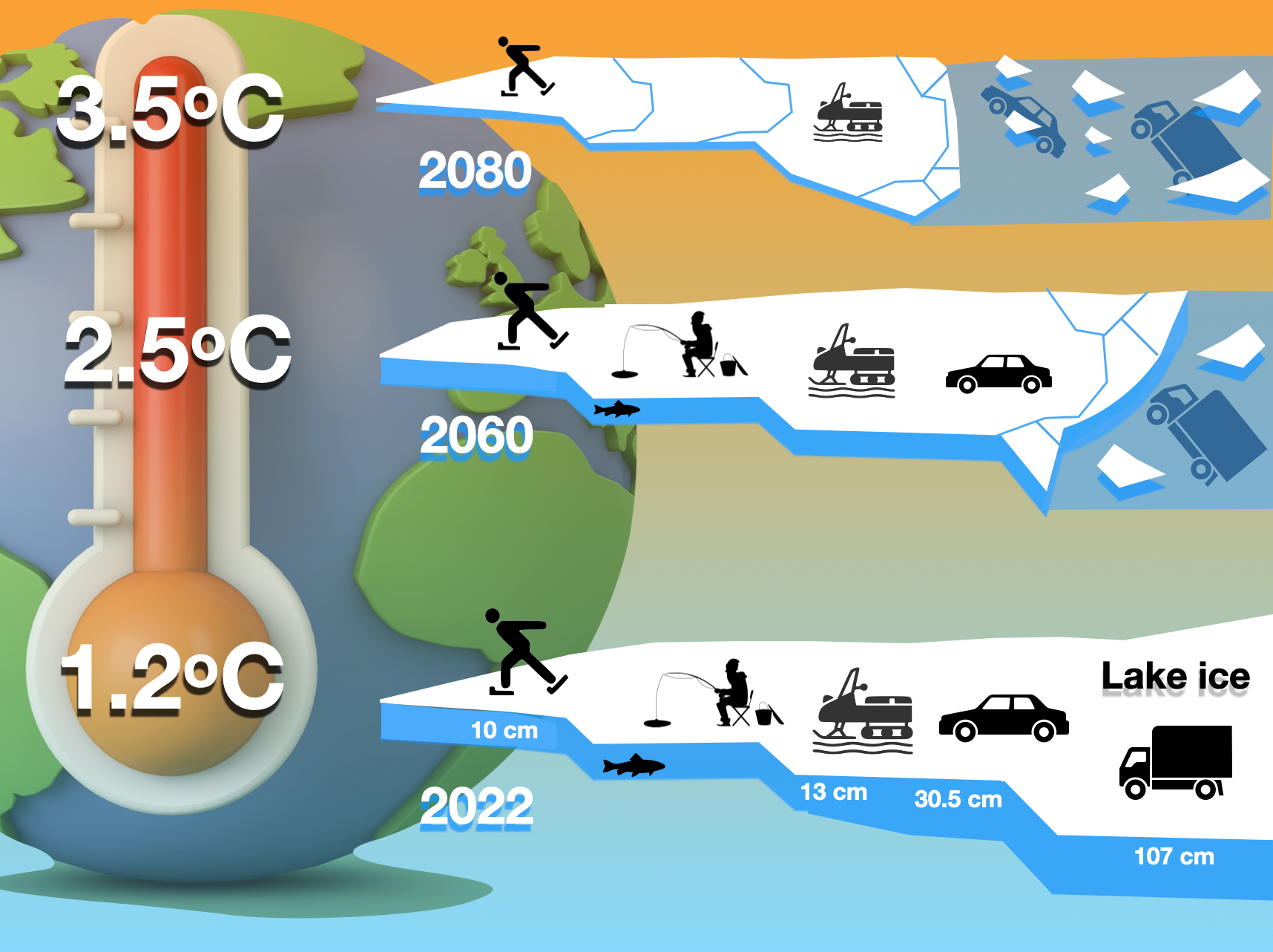Reviewed by Alex SmithOct 3 2022
Millions of international viewers tuned up to watch the reality TV show “Ice Road Truckers,” in which professional truck drivers were supposed to perform terrifying tasks like moving heavy freight across frozen lakes in the distant Arctic. According to an international group of climate and lake scientists, crossing frozen lakes with heavy trucks might eventually be a thing of the past.
 Schematic illustration of the effects of Global Warming on future lake-ice conditions and anticipated impacts on transportation and recreational activities. Warming levels are given relative to the long-term climate mean of 1900–1929. Image Credit: Background graphics, licensed from Shutterstock.com
Schematic illustration of the effects of Global Warming on future lake-ice conditions and anticipated impacts on transportation and recreational activities. Warming levels are given relative to the long-term climate mean of 1900–1929. Image Credit: Background graphics, licensed from Shutterstock.com
The research was published in the prestigious journal Earth’s Future.
The research utilized one of the most extensive future climate change model simulations to date (the Community Earth System Model ver. 2 Large Ensemble) to ascertain at what warming levels unsafe ice conditions will be attained regionally in terms of transportation and recreational activities such as ice fishing or ice skating.
The research’s conclusion is simple and clear: global warming will make lake ice far less safe. This is most likely to have an impact on Arctic indigenous communities in addition to regional economies, as people depend on ice roads for fast and relatively cheap transportation and supply during the winter.
Thinning future ice conditions also pose a hazard to distinct lake ecosystems that have adapted to repeating frozen lake conditions over tens of thousands of years.
Our results demonstrate that the duration of safe ice over the next 80 years will shorten by 2–3 weeks depending on the future warming level. In regions where lakes are used as ice roads to transport heavy goods and supplies, the number of days with safe ice conditions will decline by more than 90%, even for a moderate warming of 1.5 °C above early 20th Century conditions.
Dr Lei Huang, Study Corresponding Author and Former Postdoctoral Researcher, Center for Climate Physics, Institute for Basic Science
Dr. Iestyn Woolway, the study’s first author from Bangor University, explains, “According to our computer model simulations, many densely populated regions in the mid-latitudes are projected to experience a large deterioration in safe ice conditions for recreational activities.”
Dr. Iestyn Woolway adds, “Already a 1.5 °C warming above early 20th Century conditions can lead to more than 60% loss in the duration of safe lake ice. This will negatively impact local communities that rely on the ice recreation industry.”
Given that our planet has already warmed by 1.2 °C since the beginning of industrialization, it is timely to implement proper regional adaptation strategies in affected communities to mitigate economic losses and to avoid loss of lives.
Dr Sapna Sharma, Study Lead Author, York University
Journal Reference:
Woolway, R. I., et al. (2022) Lake Ice Will Be Less Safe for Recreation and Transportation Under Future Warming. Earth’s Future. doi.org/10.1029/2022EF002907.